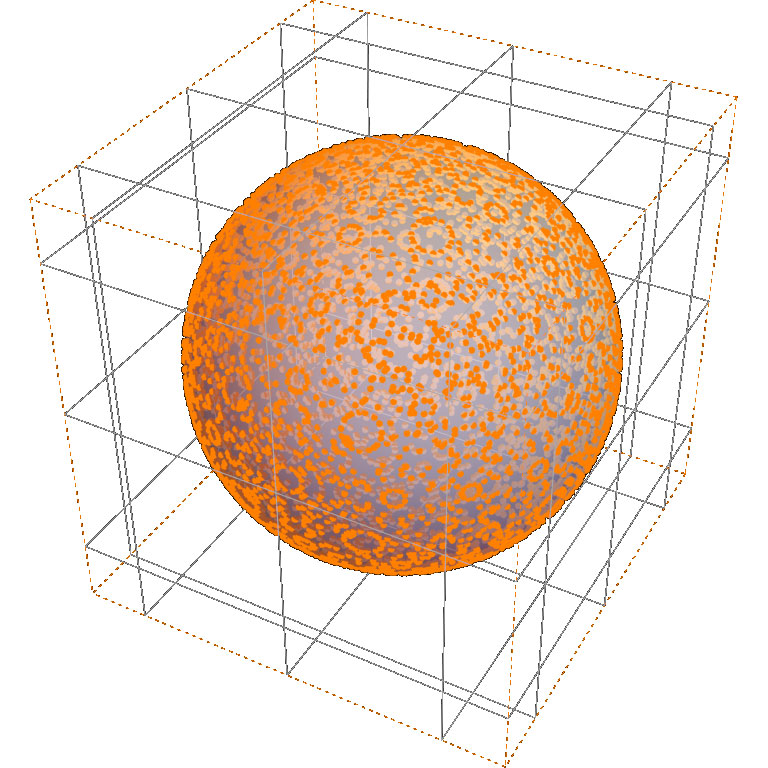Are there still other types of arithmetic operations besides addition, multiplication and exponentiation?
The following ideas come from the physicist Adil Bulus and describe some body constructions that enable a ‘seamless’ transition between different types of arithmetic operations.
The original works by Adil Bulus can be found on the website https://www.mathematische-notizen.de.
The methods presented here enable, among other things, a ‘parameterization’ between:
– Jacobi addition and addition
– addition and multiplication
– multiplication and logarithmic exponentiation
A more detailed description of the ideas outlined here can be read or downloaded here.
Note: Tetration (the next hyper operator beyond multiplication) cannot be derived with this method.
In both methods, the “addition” and “multiplication” operators fulfill all field axioms (including the distributive law).
In the following, let n be a positive and odd integer; a and b can be any complex numbers.
Method 1:
\text{(a$\oplus $b):= }\left(a^{\frac{1}{n}}+b^{\frac{1}{n}}-1\right)^n
neutral element: 1
inverse element: \left(2-a^{1/n}\right)^n
\left(\underset{n\to \infty}{\text{lim}}a\oplus b\right)=a b (normal multiplication)
\left(\underset{n\to 1}{\text{lim}} a\oplus b\right)=a+b-1 (normal addition)
\text{(a$\otimes $b):= }\left(\left(\left(a^{\frac{1}{n}}-1\right) \left(b^{\frac{1}{n}}-1\right)\right) n+1\right)^n
neutral element: \left(\frac{1}{n}+1\right)^n
inverse element: (1+1/((-1+a^(1/n)) n^2))^n
\left(\underset{n\to \infty }{\text{lim}}a\otimes b\right)=a^{\log (b)} (logarithmic exponentiation)
\left(\underset{n\to 1}{\text{lim}} a\otimes b\right)=(a-1) (b-1)+1 (multiplication)
Method 2:
Addition:
\text{(a$\oplus $b):= }\left(\left(\left(\frac{a}{n}+1\right)^n+\left(\frac{b}{n}+1\right)^n\right)^{\frac{1}{n}}-1\right) n
neutral element: -n
inverse element: n \left(\left(-\left(\frac{a+n}{n}\right)^n\right)^{1/n}-1\right)
\left(\underset{n\to \infty }{\text{lim}}a\oplus b\right)=\log \left(e^a+e^b\right) (Jacobi-addition)
\left(\underset{n\to 1}{\text{lim}} a\oplus b\right)=a+b+1 (normal addition)
Multiplication:
\text{(a$\otimes $b):= }\left(\left(\left(\frac{a}{n}+1\right)^n \left(\frac{b}{n}+1\right)^n\right)^{\frac{1}{n}}-1\right) n
neutral element: 0
invers element: n (-1+(((a+n)/n)^-n)^(1/n))
\left(\underset{n\to \infty }{\text{lim}}a\otimes b\right)=\log \left(e^{a+b}\right)=a+b (normale addition)
\underset{n\to 1}{\text{lim}} a\otimes b=a b+a+b (normale addition and multiplikation)
Generalization:
The following method allows a very general definition of arithmetic operators. The principle is nesting and combination of exponential and logarithmic functions using a ‘nesting operator’, which can be “+”, “*” or “^”. Formulated with the Mathematica programming language, an entire matrix of arithmetic operators can be generated by a single line of program code.:
Table[Nest[Exp,Nest[Log,a,i]+Nest[Log,b,j],Max[i,j]],{i,0,dim},{j,0,dim}]//MatrixForm
Table[Nest[Log,Nest[Exp,a,i+1]^Nest[Exp,b,j],Max[i+1,j]],{i,0,dim},{j,0,dim}]//MatrixForm
\left(\begin{array}{cccc}a+b & e^a b & b^{e^a} & e^{\log ^{e^a}(b)} \\a e^b & a b & b^a & e^{\log ^a(b)} \\a^{e^b} & a^b & e^{\log (a) \log (b)} & e^{e^{\log (a) \log (\log (b))}} \\e^{\log ^{e^b}(a)} & e^{\log ^b(a)} & e^{e^{\log (\log (a)) \log (b)}} & e^{e^{\log (\log (a)) \log (\log (b))}} \\\end{array}\right) such as
\left(\begin{array}{cccc}\log \left(e^a\right)^b & \log \left(e^a\right)^{e^b} & \log \left(\log \left(e^a\right)^{e^{e^b}}\right) & \log \left(\log \left(\log \left(e^a\right)^{e^{e^{e^b}}}\right)\right) \\\log \left(\log \left(e^{e^a}\right)^b\right) & \log \left(\log \left(e^{e^a}\right)^{e^b}\right) & \log \left(\log \left(e^{e^a}\right)^{e^{e^b}}\right) & \log \left(\log \left(\log \left(e^{e^a}\right)^{e^{e^{e^b}}}\right)\right) \\\log \left(\log \left(\log \left(e^{e^{e^a}}\right)^b\right)\right) & \log \left(\log \left(\log \left(e^{e^{e^a}}\right)^{e^b}\right)\right) & \log \left(\log \left(\log \left(e^{e^{e^a}}\right)^{e^{e^b}}\right)\right) & \log \left(\log \left(\log \left(e^{e^{e^a}}\right)^{e^{e^{e^b}}}\right)\right) \\\log \left(\log \left(\log \left(\log \left(e^{e^{e^{e^a}}}\right)^b\right)\right)\right) & \log \left(\log \left(\log \left(\log \left(e^{e^{e^{e^a}}}\right)^{e^b}\right)\right)\right) & \log \left(\log \left(\log \left(\log \left(e^{e^{e^{e^a}}}\right)^{e^{e^b}}\right)\right)\right) & \log \left(\log \left(\log \left(\log \left(e^{e^{e^{e^a}}}\right)^{e^{e^{e^b}}}\right)\right)\right) \\\end{array}\right)After simplification with the Mathematica function ‘FullSimplify’:
\left(\begin{array}{cccc}\textcolor{red}{a+b} & e^a b & b^{e^a} & e^{\log ^{e^a}(b)} \\a e^b & \textcolor{red}{a b} & \textcolor{blue}{b^a} & e^{\log ^a(b)} \\a^{e^b} & \textcolor{blue}{a^b} & \textcolor{red}{a^{\log (b)}} & e^{a^{\log (\log (b))}} \\e^{\log ^{e^b}(a)} & e^{\log ^b(a)} & e^{b^{\log (\log (a))}} & \textcolor{red}{e^{\log ^{\log (\log (b))}(a)}} \\\end{array}\right) such as
\left(\begin{array}{cccc}\textcolor{red}{ a b} & a e^b & \log (a)+e^b & \log \left(\log (a)+e^{e^b}\right) \\ a+\log (b) & \textcolor{red}{a+b} & a+e^b & \log \left(a+e^{e^b}\right) \\ \log \left(e^a+\log (b)\right) & \log \left(e^a+b\right) & \textcolor{red}{\log \left(e^a+e^b\right)} & \log \left(e^a+e^{e^b}\right) \\ \log \left(\log \left(e^{e^a}+\log (b)\right)\right) & \log \left(\log \left(e^{e^a}+b\right)\right) & \log \left(\log \left(e^{e^a}+e^b\right)\right) & \textcolor{red}{\log \left(\log \left(e^{e^a}+e^{e^b}\right)\right)} \\\end{array}\right)The terms in the first matrix go in the direction of “higher type of arithmetic operation” with higher indices, the terms in the second matrix go in the direction of “lower type of arithmetic operation” with higher indices. On the diagonals we find the types of well known arithmetic operations, for which the associative law and commutative law apply (in red color). The arithmetic operator type “exponentiation” can be found in the first matrix apart from the diagonal (in blue color). This is also reflected in the fact that associativity and commutativity are not available for this type of operator. Two terms, which are on the diagonal and are adjacent, each form a field with respect to the complex numbers for which the distributive law also applies.
Examples of a such fields are the pairs:
